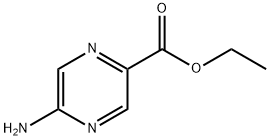On April 2, local time in the United States, President Trump declared a national emergency and announced a series of tariff measures that have sent shockwaves through the global economic landscape. A 25% tariff on imported cars was set to take effect on April 3, with additional tariffs on all countries at a 10% "baseline" level coming into force on April 5. Moreover, personalized higher "reciprocal tariffs" on countries with the largest US trade deficits were slated for April 9. This radical move has not only drawn widespread criticism within the United States but also triggered strong reactions globally.Will Trump's Tariff Measures Really "Make America Rich Again"?
Trump declared a national emergency and imposed tariffs on all imports. Why is a 25% tariff imposed on imported cars?
Related Encyclopedia
Related Products More >
-
- CNY equest For Quotation
-
- 13927-71-4
- CNY equest For Quotation
-
- CNY equest For Quotation
-
- CNY equest For Quotation
-
- CNY equest For Quotation
-
- 10402-15-2
- CNY equest For Quotation
-
- 10402-15-1
- CNY equest For Quotation
-
- 10402-15-0
- CNY equest For Quotation




 沪ICP备2021018848号-5
沪ICP备2021018848号-5

The use of certain chemical compounds in the automotive industry may also be affected by these tariffs. For instance, materials like polycarbonate, which is used in car dashboards and headlights due to its high impact resistance and optical clarity, might see price fluctuations. Additionally, coatings made from titanium dioxide (TiO₂) and silicon dioxide (SiO₂) for scratch resistance and glare reduction could also be impacted, potentially increasing production costs further.
Trump's declaration of a national emergency and the imposition of across-the-board tariffs, including the 25% tariff on imported cars, raise serious questions about the future of global trade and economic stability. While Trump claims that these tariffs will help bring in revenue for the US government and revitalize the US manufacturing industry, economists and business people warn of the potential negative consequences. These tariffs could push up prices, harm the interests of US consumers and companies, disrupt global trade, and be detrimental to global economic development.
In response to Trump's actions, several US trading partners have already indicated that they will take countermeasures. This tit-for-tat approach could lead to a trade war, further exacerbating economic tensions. The question remains: Will these tariffs achieve their intended goals, or will they plunge the global economy into chaos?
The US public opinion has been generally critical of the policy of imposing tariffs on cars and their key parts. Analysts and industry experts have pointed out that the North American automotive industry chain is highly integrated, and the tariffs on parts will accumulate costs, making the transfer of the automotive industry chain back to the US both long - drawn - out and costly. This will undoubtedly increase the burden on American consumers. The American auto industry has also expressed widespread concerns, as most US automakers have supply chains distributed overseas, and the idea of "producing in the US to avoid tariffs" is far from practical.
The US tariff increase has not only faced domestic questioning but has also triggered strong reactions globally. German Chancellor Scholz criticized US trade protectionism at the Hannover Industrial Fair, and European industrialists worried about the impact on the global supply chain and increased economic uncertainty.
Now, let's consider the potential chemical materials implications. In the automotive industry, steel is a fundamental material. With the 25% tariff on imported steel already in effect since March 12, the cost of producing cars in the US using imported steel will rise significantly. Aluminum, another important material in car manufacturing for its lightweight properties, is also subject to the same 25% tariff. This might prompt US automakers to seek alternative materials. For example, they could look more into carbon - fiber - reinforced polymers. Carbon fibers, mainly composed of carbon atoms, offer high strength - to - weight ratios. When combined with polymers such as epoxy resins (a type of thermosetting polymer), they can form materials that are not only lightweight but also strong. This could be a substitute for steel and aluminum in some automotive parts to reduce the impact of high - cost imported metals due to tariffs.
In the context of Trump's tariff - heavy strategy, one has to wonder: Will these tariff measures, which are supposed to "make America rich again," actually achieve the desired economic revitalization, or will they further disrupt the global trade order and harm the interests of the US itself and the world economy?
One of the most immediate concerns regarding the 25% tariff on imported vehicles is its effect on the highly integrated North American automotive supply chain. Amy Broglin-Peterson, a supply chain expert at Michigan State University, highlighted the complexity of automobile production, where parts frequently cross borders multiple times before final assembly. The accumulation of tariffs at each stage could substantially increase production costs, which would inevitably be passed on to consumers. This situation not only threatens affordability for buyers but also places domestic manufacturers in a difficult position, as they rely heavily on imported components.
Moreover, industry experts argue that Trump’s assertion that manufacturing should move back to the U.S. is unrealistic. Ivan Drewry, an auto analyst, stated that no car in the United States is made entirely with domestically produced parts. Given the high capital investment required to establish new manufacturing facilities, shifting supply chains back to the U.S. is a long and costly process. As a result, many automakers may struggle to adapt, potentially leading to job losses rather than job creation.
Broad Tariffs: Economic Strategy or Risky Gamble?
Trump’s declaration of a national emergency has extended beyond the auto industry, introducing a 10% blanket tariff on all imported goods, effective April 5. Additionally, countries with substantial trade deficits with the U.S. will be subject to even higher "reciprocal tariffs" starting April 9. The administration argues that these measures will protect U.S. sovereignty, enhance economic security, and bring manufacturing jobs back to the country. However, history suggests that tariffs often lead to retaliation, inflation, and strained trade relations.
Notably, some essential materials will be exempt from reciprocal tariffs, including steel, aluminum, automobiles, auto parts, energy, and specific minerals. Additionally, gold bars, copper, pharmaceuticals, semiconductors, and wood products will not be affected. However, many consumer goods and industrial inputs will still be subject to the baseline tariff, potentially causing disruptions across multiple sectors.
Global Backlash and Potential Countermeasures
Trump’s aggressive tariff strategy has already sparked a global response. At the Hannover Industrial Fair in Germany, Chancellor Olaf Scholz openly criticized U.S. trade protectionism, warning that such policies could fracture international supply chains and heighten economic instability. European and Asian economies, which are among the largest exporters to the U.S., are considering countermeasures, including reciprocal tariffs on American exports.
Major U.S. trading partners have also expressed concerns about the implications of these policies. For instance, Mexico and Canada, key players in the U.S.-Mexico-Canada Agreement (USMCA), may seek retaliatory measures to protect their industries. Meanwhile, China and the European Union, both of which have faced previous tariff battles with the U.S., could impose their own restrictions, further escalating trade tensions.
Economic Consequences for Consumers and Businesses
Beyond its impact on foreign relations, the tariff policy is expected to place a heavy financial burden on American consumers and businesses. As production costs increase, companies may either pass these costs on to consumers or absorb them, leading to lower profit margins and potential layoffs. According to the Anderson Economic Group, car prices alone could see an increase of up to $12,500, making vehicles less affordable for the average American.
Moreover, the tariffs could contribute to inflationary pressures. If businesses face higher costs for imported materials and components, everyday goods could become more expensive, affecting household budgets. The uncertainty surrounding the long-term implications of these policies may also deter investment, slowing down economic growth rather than stimulating it.